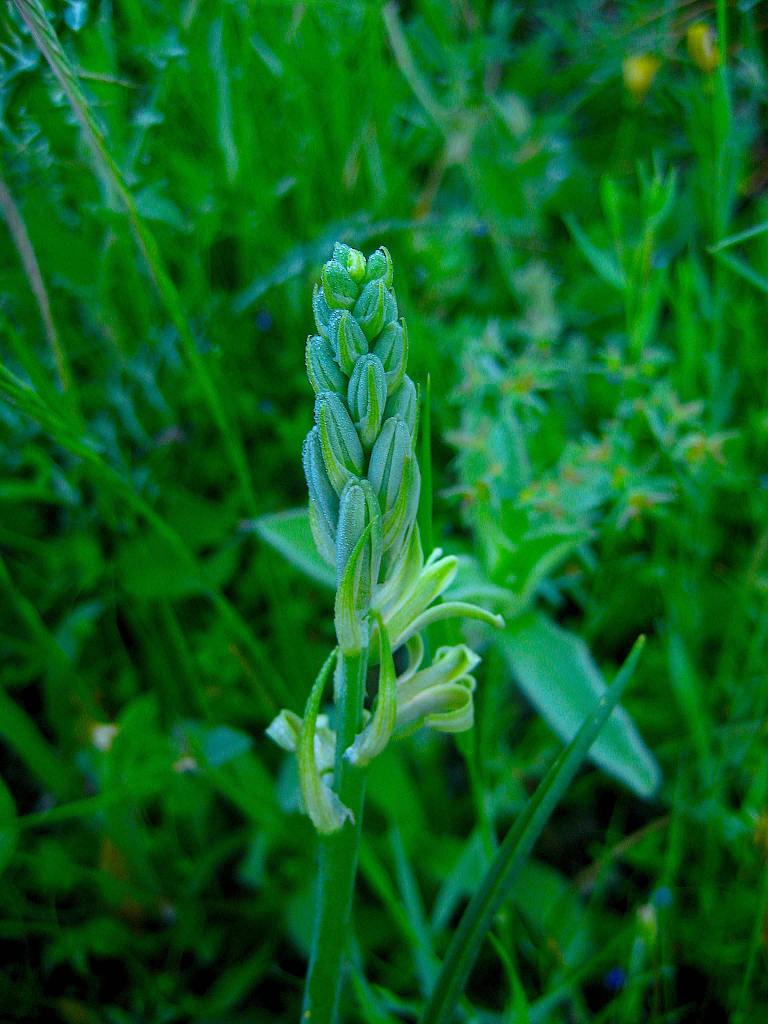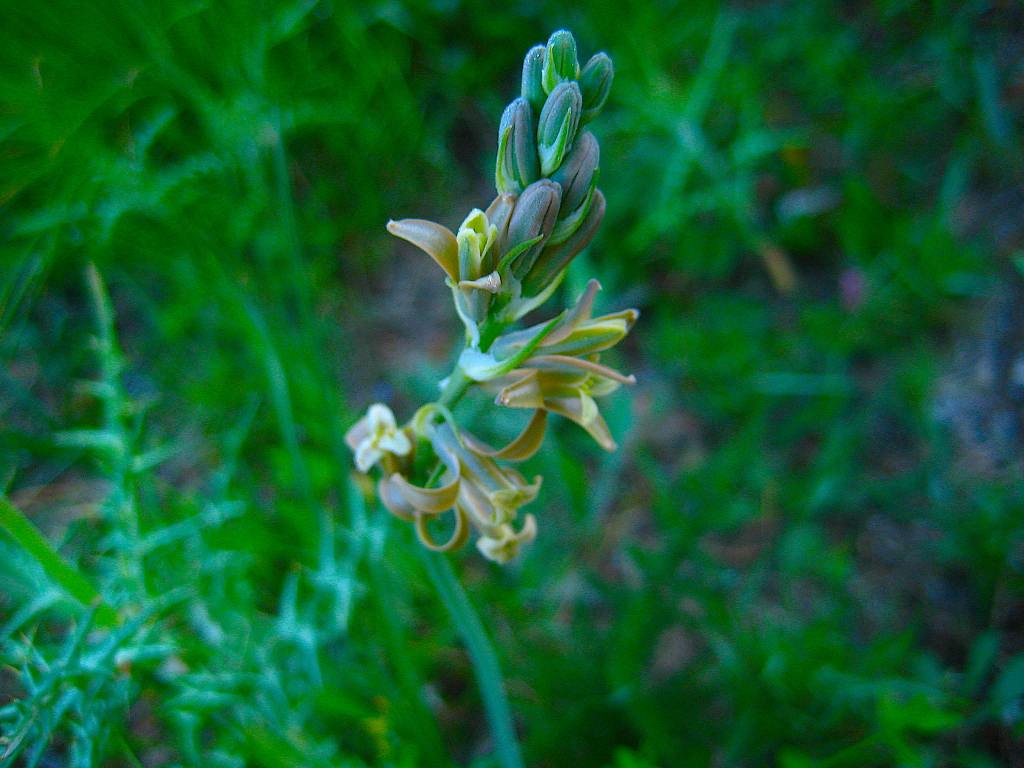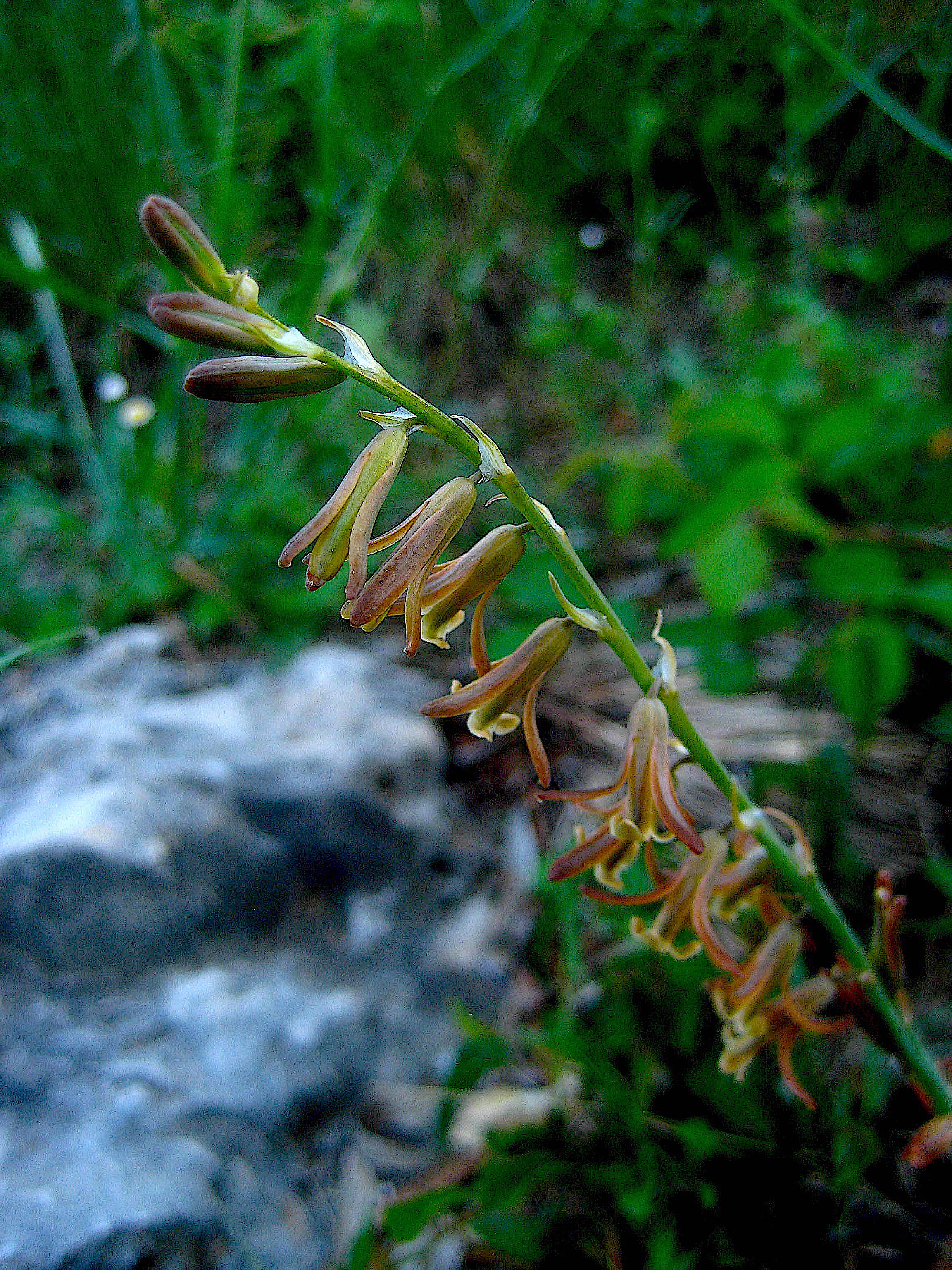
In spring, one of the wild flowers I most look forward to in the garden is the bronze bell lily called el marcet (in Valenciano) or jacinto bastardo (false hyacinth in Castellano), Dipcadi serotinum. Three springs ago when we moved in, I chanced upon them for the first time. They were perched atop a dry stone wall behind an ancient olive by the wood shed. I’d never seen such subtle colours — copper, bronze, purple, blue-green, yellow-green — in a lily before, and once the lilies had set seed, I scattered them all around, hoping to get clumps of them in succeeding years. Disappointingly no plants emerged the following year nor in the two years since, in places where I’d broadcast the seeds. Last year I found a group unexpectedly growing amid low-growing wild yellow and white rock roses (helianthemums) at one end of a terrace in the back garden.
In form these lilies resemble English blue bells, though with much narrower tubes, and with no discernible scent. They are rather difficult to find among grasses and plantains and other creeping plants such as the clovers, as their leaves look very much like grass leaves, and in bud their flower spikes look indistinguishable from dwarf asparagus spears. Can you spot any in the photo below?
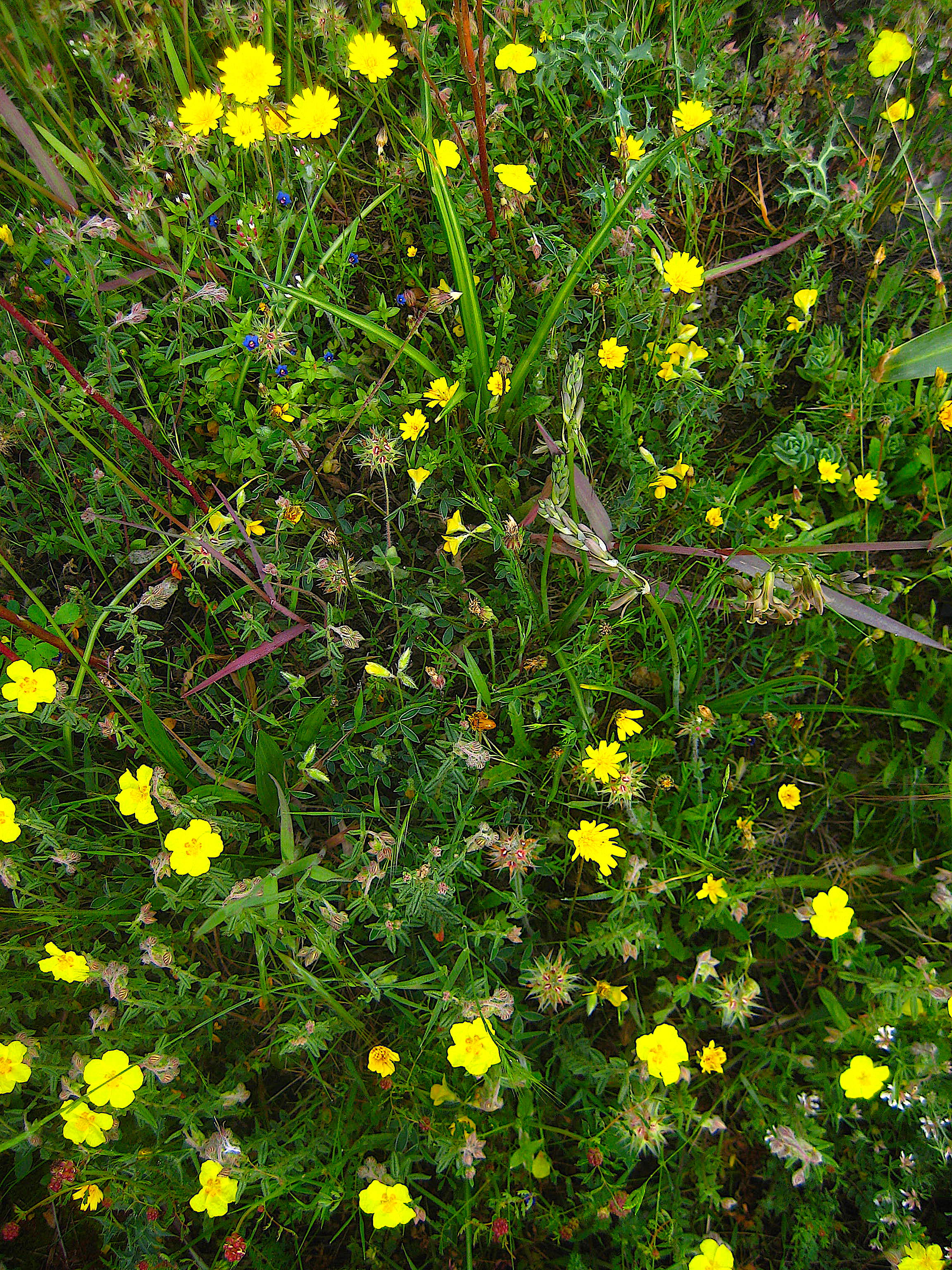
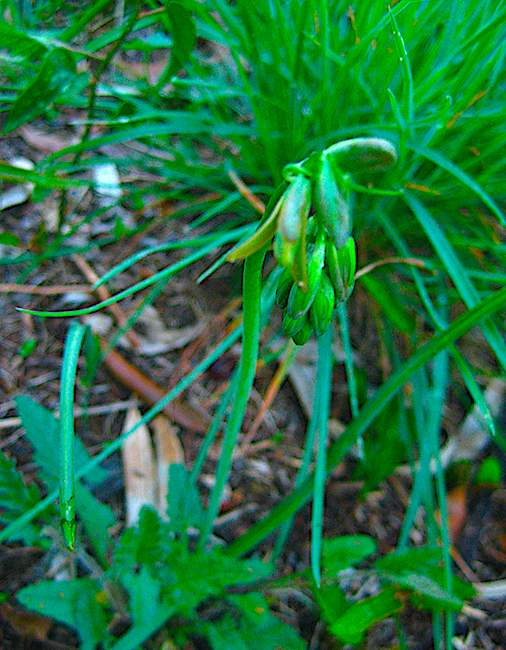
I looked for them in the same area that I’d seen them last year, but in vain. Then, while walking along a lower, parallel terrace, eyes down, ever on the lookout for any unfamiliar plants, I spotted some. How astonishing to see them where they had not grown before. It is fascinating how these lilies migrate from one area to another in the garden. However do they manage to do this? Each terrace is separated from the next by dry stone walls, and I cannot imagine how the seeds could have been swept by rain under and through the boulders and stones that make up the wall — on average half a meter wide and the same again as high. I wonder whether the ants or birds are responsible. Or perhaps, the seeds may have lain underground all this time, biding their time to maturation and blooming.
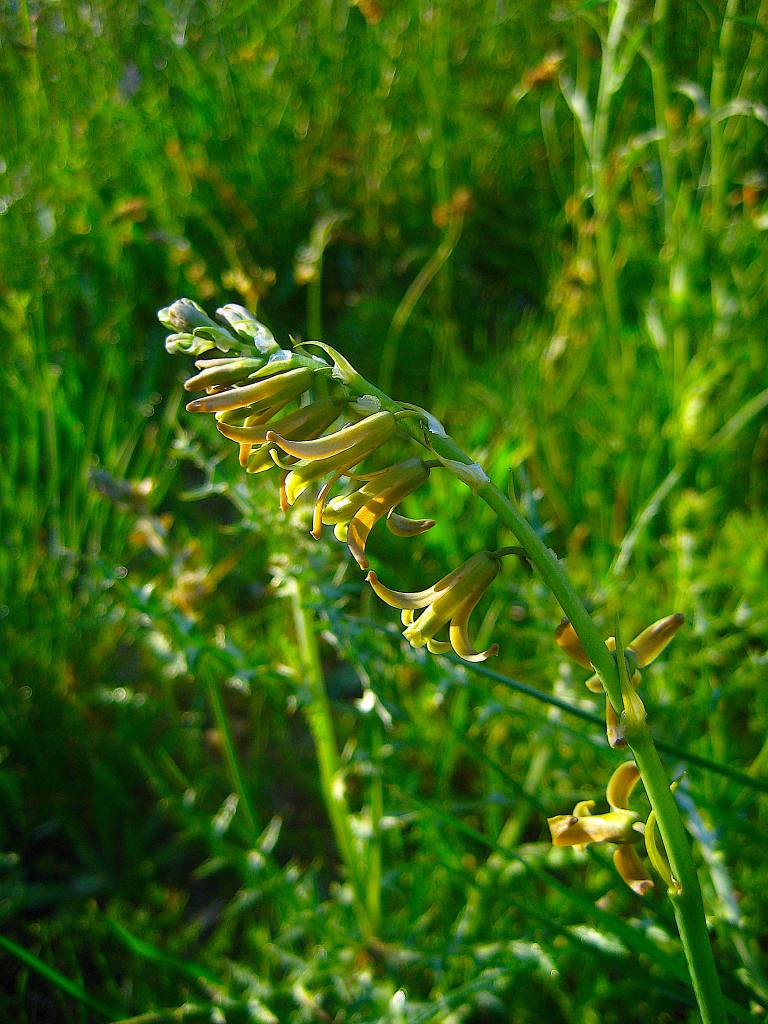
Dipcadi serotinum among Plantago (plantain) flower heads.
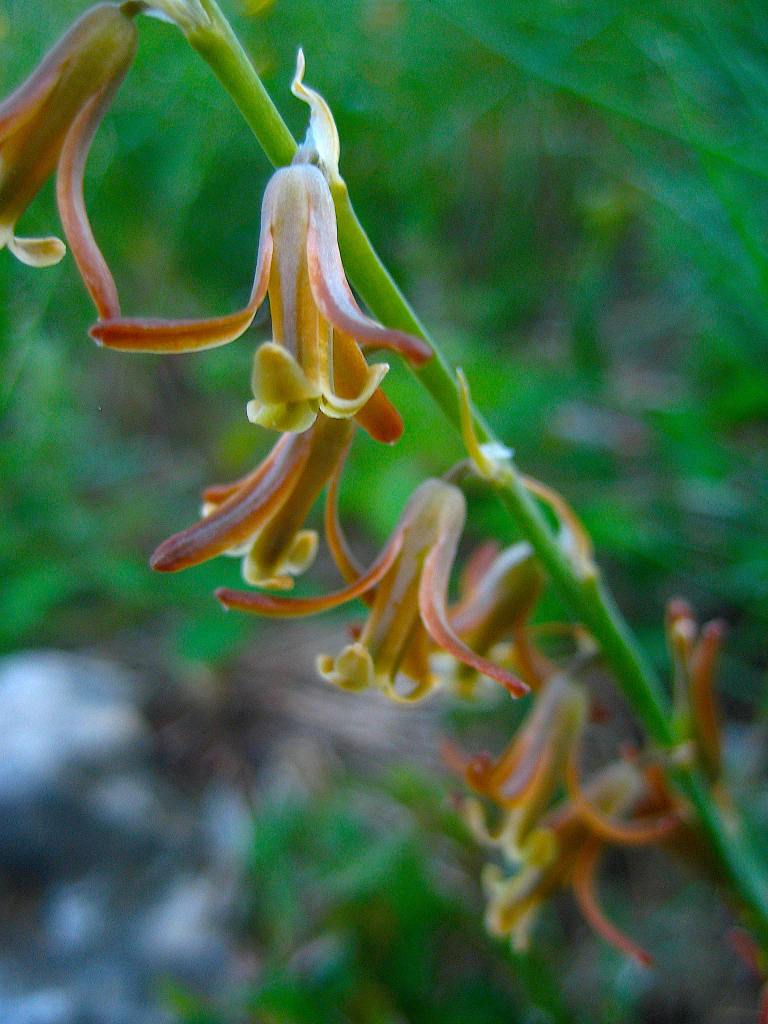
At any rate, I spent a good hour or so admiring these elegant lilies in their new habitat, totally seduced by their subtle colouring and graceful form, and trying not to crush any as I crouched low to the ground with my camera. And as my unbelievable luck would have it, when I passed by the upper terrace on my way back to the house for morning coffee, there among the wild helianthemums and various creeping wild legumes were more of them, less advanced in their blooming than those in the lower terrace, and thus almost invisible in the low-growing sward.

